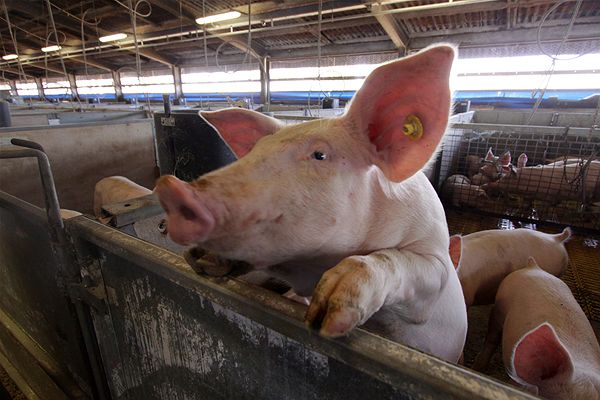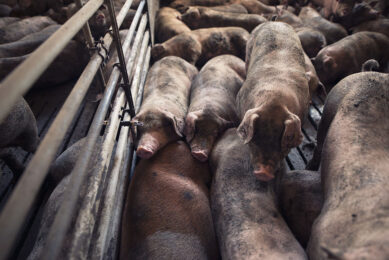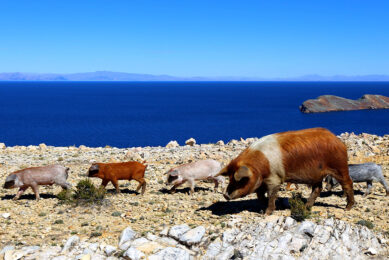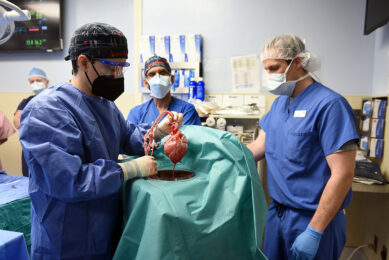No end to suffering yet for US pork industry

Red ink is about to wash across the pork industry which is facing losses unseen even in the fall of 1998 when hog prices at times approached zero value, Purdue Extensionagricultural economist Chris Hurt explains.
The stressors include: more hogs than expected, rapid sow liquidation now underway, and record feed prices. Losses in the final quarter of this year could be US$60 per head, exceeding the previous record quarterly losses of US$45 per head in the fall of 1998.
Slaughter numbers in the past two weeks have been up six percent when only about one percent more hogs were expected. This has caused a US$10 per hundredweight drop in live prices since late July, with prices now in the low-US$60s.
The source of those extra hogs is probably related to some delayed marketings due to the summer heat, to a desire to sell pigs more quickly before prices really tumble moving into fall, and to high sow slaughter. Projected prices for the final quarter this year are in the mid-US$50s, using current lean hog futures as a base. Tragically, costs of production are expected to be above US$75 per live hundredweight for the remainder of the summer, this fall, and winter.
Losses per head this summer are estimated at US$30, to be followed this fall by record quarterly losses of US $60 per head. Losses in the first and second quarters of 2013 are projected to be US $38 and US $5 per head, respectively. Over this one year span, losses may average about US $33 per head. That means total losses of around US $4 billion for the US industry.
There is strong evidence that the initial wave of breeding herd reduction began in early August and has intensified. Sow slaughter data show that around 30,000 sows were liquidated in the month of August alone. This would represent a reduction of about 0.6 % of the national sow herd in one month. This rate will continue, and perhaps even increase, if corn prices stay at current levels or move higher. The breeding herd may decline by four to six percent in the six months from August 2012 through January 2013. The rate of liquidation is expected to slow sharply after this coming winter.
The dilemma for the industry is that the enormous losses are going to occur for pigs that are already born. Continued liquidation of sows will not reduce slaughter numbers until next summer and so does not address the short-term financial disaster. Short of euthanizing young pigs, reduction of weights can reduce total pork supplies, use less feed, and enhance hog prices. The economics of reducing weights is largely related to packer buying programs. Generally it is not economic for producers to sell at lighter weights that receive a discount. Perhaps packers would consider lowering those threshold weights in this emergency. Producers should recognize that this could be costly to packers and to not expect one packer to do so unless all agreed.
President Obama did authorise the purchase of a modest amount of pork. That volume is so small as to reduce the losses by less than US $1 per head. Other demand stimulation could help increase pork prices, but the program would need to be much larger and more money would likely have to come from a Congress that has not had a strong record of agreement or accomplishment in recent months. There remains a small amount of hope that a partial waiver of the ethanol RFS for 2013 could reduce corn use for ethanol and lower corn prices. However, evaluations at the University of Illinois, Purdue, and Iowa State all indicate that such a partial waver may have only small impacts on volume of corn used for ethanol.
Financial losses of the magnitudes projected here will cause massive erosions of family equity and some bankruptcies. Unfortunately losses in 2008 and 2009 were not fully recovered by the profits in 2010 and 2011 so that some producers face this tsunami in weakened financial condition. Family hog farms with a sizable land base will have land equity to draw on. Larger hog producers with a minimum land base will need to draw on corporate equity and then their lenders. Lenders will make the final decisions for the weakest, but will strive to keep companies in operation as they seek new buyers. This means that another round of consolidation of ownership can be anticipated.
Unfortunately, individual producers are going to need to find their own way through the short-term carnage. The irony is that hog production may return to profitability by mid-summer 2013 when meal prices begin to moderate, hog prices move to record highs, and rain and reasonable temperatures bless our nation’s corn and soybean fields once again.
Join 18,000+ subscribers
Subscribe to our newsletter to stay updated about all the need-to-know content in the pigsector, three times a week. Beheer
Beheer










 WP Admin
WP Admin  Bewerk bericht
Bewerk bericht